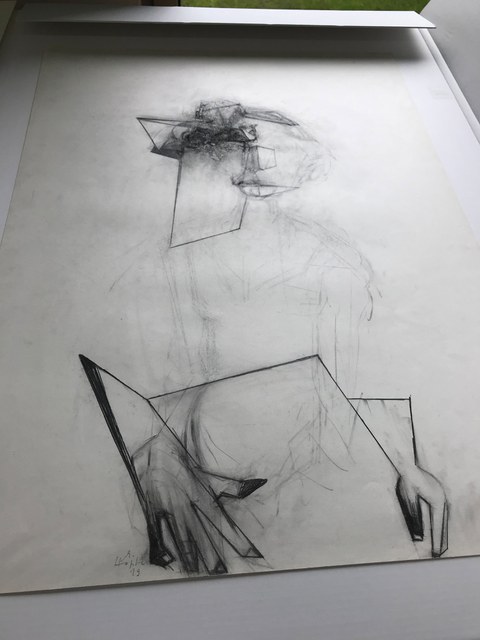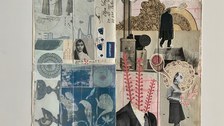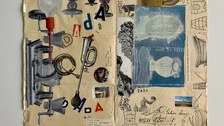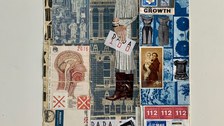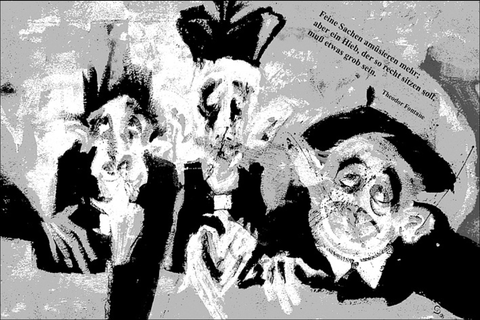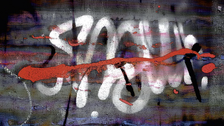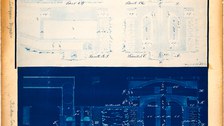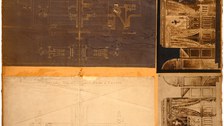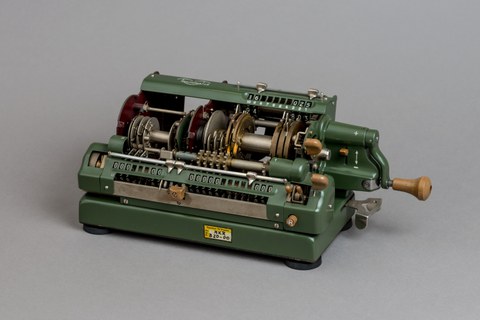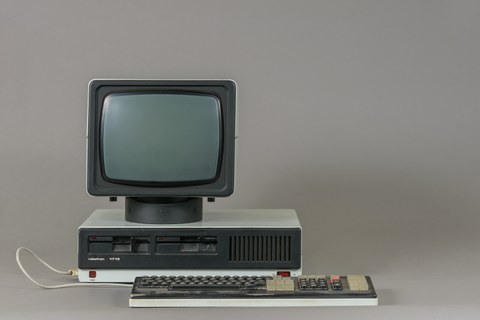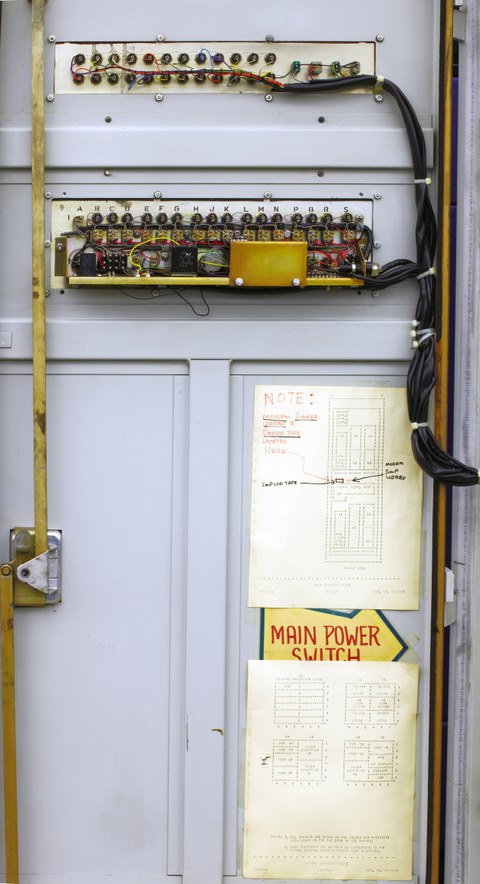Art
At the Chair of Distributed and Networked Systems, we know that cutting-edge research needs a clear mind. Art can contribute to this and serve as a source of inspiration.
In our rooms, we exhibit art, either original art or reproductions, ranging from paintings, drawings and etchings to photos. The various artworks are directly or more abstractly related to what we do, but we definitely do not see the pieces as purely decorative.
At TU Dresden, we have access to art and professional support by the Kustodie, the Office for Academic Heritage, Scientific and Art Collections. We gratefully acknowlege their work.
Table of contents
Britta Clausnitzer, "Holo", 2017
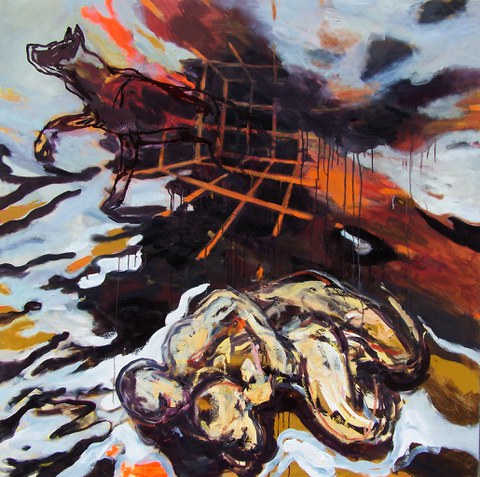
Britta Clausnitzer, "Holo", 2017. Oil on canvas.
Britta Clausnitzer is a passionate painter and performing artist based in Berlin. Her works have been held in exhibitions and permanent collections across Germany and the USA. Taking an abstract approach to representations of nature and people, she creates versatile works united in their bold colour palette and collective mystery.
Similar to research, you need to be patient, open-minded, and look more than once to understand the whole picture.
This art work is part of a private collection.
Elke Hopfe, "Gloria", 2019
Elke Hopfe is a German draftsman. From 1992-2011 she was also a Professor of Art Work at the Dresden University of Fine Arts.
"Elke Hopfe is a German draftsman whose art explores the many facets of human beings. Though her abstractions tend to deform the human appearance, realistic elements are never fully abandoned. Hopfe transforms the individual appearance into complex compositions that translate the existential characteristics of her subjects. She creates almost exclusively using graphite on paper." [https://www.singulart.com/en/artist/elke-hopfe-16685]
In her work, Elke Hopfe shows dedication to a challenging topic but clearly focuses on the essentials using very basic material.
Frank Voigt, "art x mail", 2017
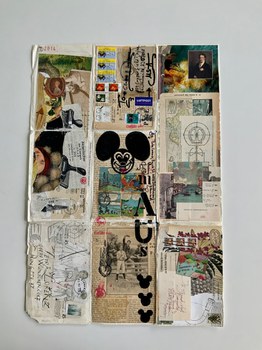
© TU Dresden
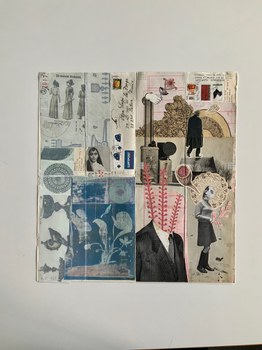
© TU Dresden
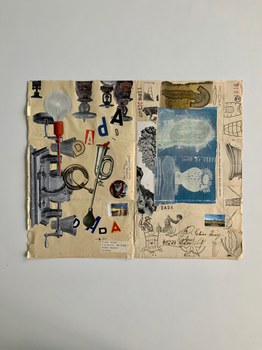
© TU Dresden
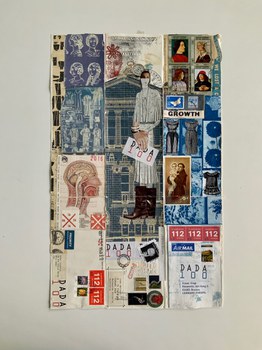
© TU Dresden
Frank Voigt is an artist born in Dresden. The pieces are part of the art x mail collaboration between Frank Voigt, Petra Lorenz, and Volker Lenkeit, which is part of the larger mail art project.
Mail art "is an artistic movement centered on sending small-scale works through the postal service." It allows to freely exchange art (and thus obfuscated, subtle messages) via post. The first mail art experiment started in 1943. The project is open to professional artists from all over the world who are interested in sharing thoughts, mutual inspiration and artistic collaboration. Mail art can be seen as the analog form and precursor of the many digital communities that are enabled by the Web and Internet.
Tilman Hornig, "Faltung Nr. TBA"
Tilman Hornig is a contemporary artist born in Zittau. From 2000-2006 he studied at the Dresden University of Fine Arts and from 2006-2008 he was a master-class student with Martin Honert. His work is a reaction to current events, making use of cross-media.
"Faltung" (in English "Folding") is a series of pieces based on enamel on steel. Although this piece is in motion as a product of the specific forms of folding and attracts attention due to its size and striking pink, it conveys rest and silence.
Andreas Seeliger and TBA
Andreas Seeliger, born in Dresden, is a photographer. He founded the photography workshop of the Dresden cultural association riesa efau in 1992 and has been teaching photography at the TUD Department of Art Education since 1994. His focus is on architecture, documentation, and long-term projects.
Gerhard Deke
Gerhard Deke was born in Dresden, is an engineer for Mechanical Engineering, a specialist engineer for automated data processing ("Datenverarbeitung"), and an artist. Deke says about his work: "I create graphics using photographic and computer technology. My process involves two areas of work: in the first, I work in a real, analogue way (producing photographic image sketches) and in the second, I work in a virtual, digital way (transforming the sketches into new image forms). The transformation changes the image structure and combines at least two modified sketches in a sandwich process to create the so-called third image. The result: dual graphics. I occupy the space between photography and classic graphics."
Room 1
Room 02
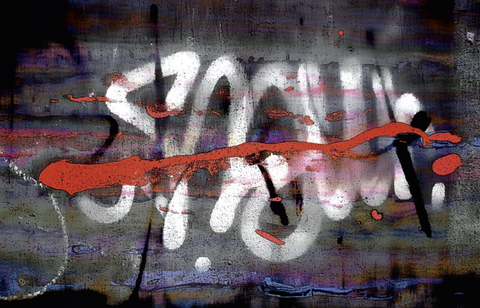
Gerhard Deke, "Komposition g686", 2011, https://www.werkdatenbank.de/documents/obj/wdb_00000819
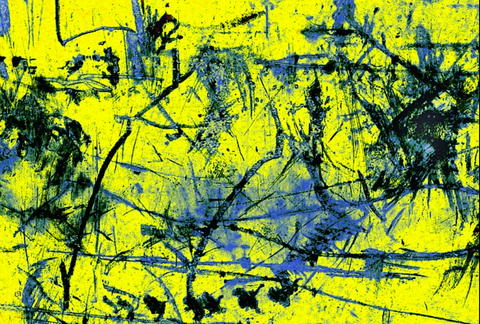
Gerhard Deke, "Schwarz auf gelbem Grund", 2010, https://www.werkdatenbank.de/documents/obj/wdb_00000569
Hermann Krone Collection, "Lichtpausen"
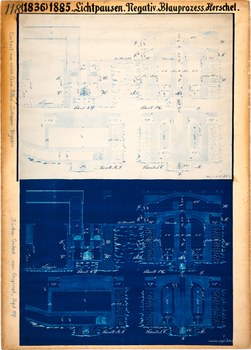
(1836)1885. Lichtpausen. Negativ. Blauprozess. Herschel © TU Dresden
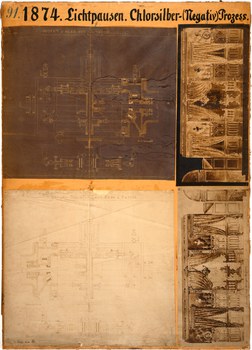
1874. Lichtpausen. Chlorsilber- (Negativ) Prozess © TU Dresden
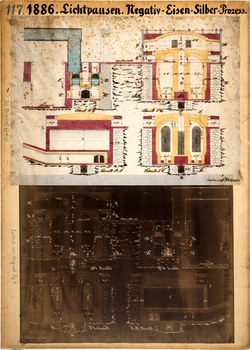
1886. Lichtpausen. Negativ-Eisen-Silber-Prozess © TU Dresden
Hermann Krone was a photographer, scientist, university lecturer, and publicist from Saxony, Germany. He pioneered the development of photograpy in the 19th century. Scientific insights, their application, and teaching to students were equally important to him -- a perspective that we share. To illustrate different photo techniques to students he created 137 didactic charts with more than 1,200 images. TU Dresden owns the Hermann Krone Collection.
We selected three pieces (KAD-T-091, KAD-T-117, and KAD-T-118), which illustrate advanced replication based on diazotype (aka "Lichtpausen").
"From analog calculation to digital computation to interconnectivity"
This series consists of three independent photos that we have put in context to illustrate the evolution of single nodes to a distributed, networked system.
"Triumphator CRN1", 1955
CRN1 is a mechanical calculator. CRN1 supports the four basic arithmetic operations and provides a small buffer that allows the result of one calculation to be used for the next calculation.
The Triumphator CRN1 was manufactured by Triumphator and introduced around 1955.
"Robotron 1715", 1985
The Robotron 1715 was a common PC in the GDR, equipped with 64 KB RAM, 2 KB ROM, and two 5.25" floppy drives.
The Robotron 1715 was manufacted by Robotron and introduced in 1985.
"Interface Message Processor (IMP)", 1969
An Interface Message Processor is a gateway that interconnected hosts of the ARPANET by forwarding packets. You can consider an IMP as a precursor of an Internet router. If you want to learn more about the functions of an IMP, you may want to read RFC 1.
IMPs were manufactured by BBN and built in 1969.
Photographer: Mark Richards
We thank Mark Richards and the Computer History Museum (Mountain View, CA, USA) for providing us the photograph for internal reproduction.

